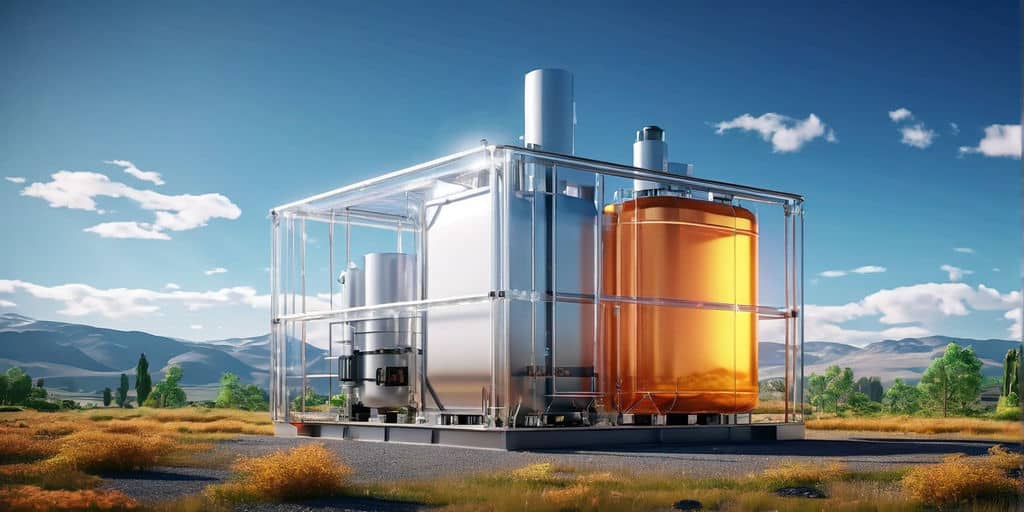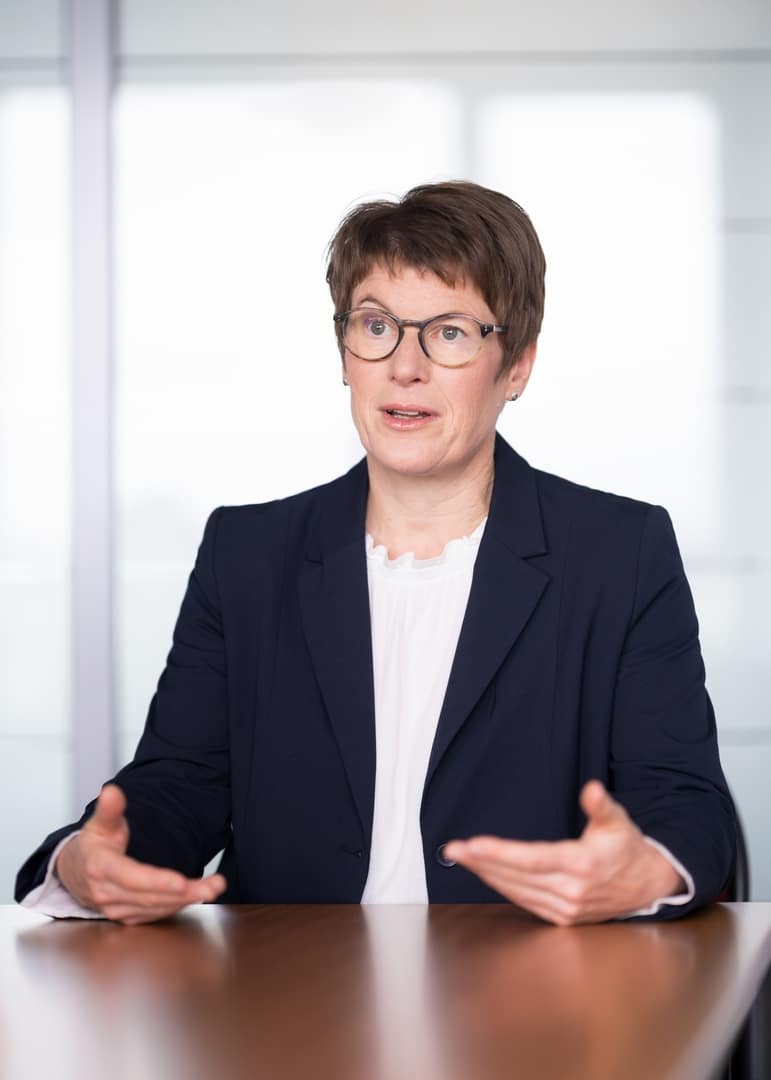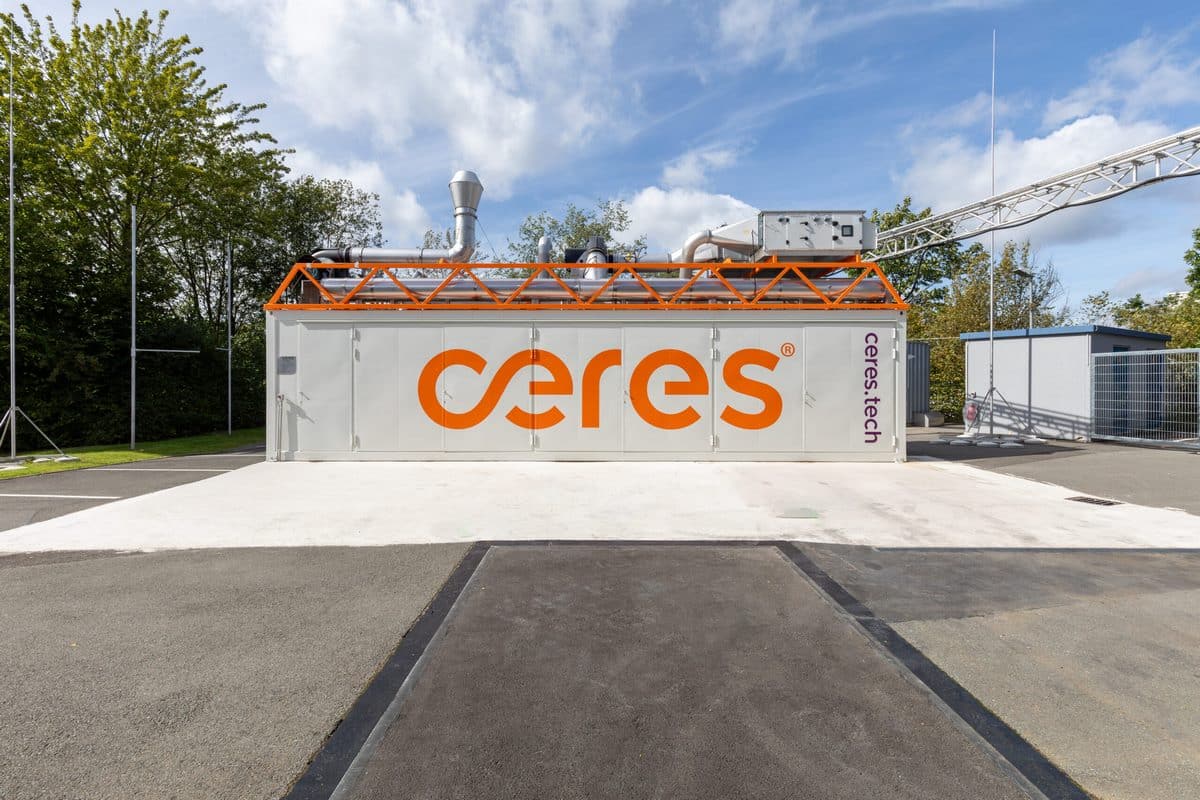The Institute of Space Propulsion of the German Aerospace Center (DLR) in Lampoldshausen is one of Europe‘s largest hydrogen consumers. The organization primarily uses cryogenic hydrogen to test the main and upper stage engines of Europe’s Ariane 5 rocket. The experiences made during those tests will now be expanded even further: Together with ZEAG Energie, the DLR is planning to implement a regenerative hydrogen process chain. It creates the required hydrogen in a 1 MW PEM electrolysis system, which draws its power from the neighboring wind farm Harthäuser Wald, and makes the hydrogen available on-site for use in space flight, energy and transport applications. This turns the H2ORIZON project into an entirely new demonstration and research platform for utilizing a wide range of hydrogen technologies.
When the Vulcain 2 main engine is running at test stand P5, it converts about 28 tons of hydrogen into fuel energy within ten minutes. The maximum output is three gigawatts. And that’s not all: The DLR in Lampoldshausen also operates test stands for innovative engine designs using gaseous hydrogen. The amount necessary for these manifold endeavors comes from large-capacity units storing cryogenic and gaseous hydrogen and from a network that transports the fuel from a central storage facility. This fuel is available as both cryogenic and gaseous hydrogen (at 320 or 800 bar, respectively).
H2ORIZON project
The H2ORIZON project was launched to meet the DLR‘s aim of making its long-term experiences in hydrogen applications as well as the existing infrastructure available to other industries not associated with space flight. The ultimate goal is to implement a technology transfer that ties the space flight, energy and transport sector to hydrogen as its central component, in order to enable the use of a wide variety of hydrogen technologies on-site while benefitting from the best possible utilization of synergies.
At the same time the DLR …
Cross-sector platform
The three focus areas of H2ORIZON are:
1) Establish and operate a sustainable, industrial-scale process chain that will generate and supply hydrogen for application in various industries or sectors
2) Guarantee sustainable and secure energy supply of the DLR location with heat and power sourced from natural gas and hydrogen
3) Set up a demonstration and research platform for the use of and research into a wide range of hydrogen technologies beyond the already planned process chain
To be able to generate renewable hydrogen in large quantities, the DLR location will have a dedicated power line connected to the wind farm. The transmission output will be as much as ten megawatts. Hydrogen will be created by an electrolysis system with a polymer electrolyte membrane (PEM) and a power rating of one megawatt in the first stage of development. The great capacity that the wind farm has available leaves the door wide open for later plant upgrades. The electrolysis system is a product of manufacturer ITM Power, based in Sheffield, UK.
…
Demonstration and research platform
The H2ORIZON project will be implemented as a demonstration and research platform open to any kind of technology and is planned to be available for third-party use as well.
Provided that the interplay between the components is duly optimized, linking the two energy carriers, hydrogen and natural gas, to electrical energy and heat, and to the demand from space flight, energy and transport applications can create synergy effects and an ideal system load that would not be possible if each sector was on its own. The DLR and ZEAG hope to gain valuable insights into what a renewable H2 value chain could look like in terms of technology and economic feasibility. Additionally, the project should try and showcase on-site strategies that will offer solutions for a successful energy transformation, for example, by meeting the challenges of peak loads and performance in the power grid, the long-term storage of energy or inexpensive fuel supply for emission-free transportation.
Regional importance and beyond
In Lampoldshausen, the DLR is developing 2.5 hectares (62 acres) to make room for the implementation of H2ORIZON and allow for possible future expansions of the demonstration and research platform. The land will also be available for new buildings by the DLR and local institutions as well as for new collaborations. The land development affirms the research center’s commitment to grow the location. Additionally, creating renewable hydrogen in Lampoldshausen will shorten supply lines in southern Germany significantly and make it possible to base hydrogen applications in the industrial, energy and transportation sector on renewable sources.
Author: Thorben Andersen, M.Sc., Deutsches Zentrum für Luft- und Raumfahrt e.V. (DLR), Institut für Raumfahrtantriebe



























0 Comments